Newsletter Issue 9 | Sep 2011
Florida Eye News and Views
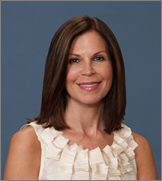
Dear Readers:
Welcome back to busy schedules, school, regular business hours and everything else that comes along after Labor Day weekend. It’s no different for us here at Florida Eye. We are on the go with our clinical trials, back to school eye exams, planning CEs, community lectures, collecting eyeglasses and just the regular hustle and bustle of the fall season.
We have a variety of information in this issue, including everything from the latest treatments available for Macular Degeneration and how to use the Amsler Grid to test your vision at home (or anywhere!), to everything you always wanted to know about the possible benefits of incorporating Lutein in your daily diets.
Florida Eye’s first continuing education seminar of the season for Palm Beach County optometrists is scheduled for Tuesday, October 11th in Boca Raton. Worth two credits, the event will be held once again at the very popular Bogart’s Bar & Grill at Cinemark of Boca Raton. Reservations can be made online, or by calling me at 561-736-5050.
We hope you enjoy our newsletter and find it interesting and useful. If you have any topics you’d like to see included, send me an email and let me know. You can also send comments and/or suggestions to [email protected]. And just a reminder — you can request brochures and business cards through our site under Physician Resources. Have a great fall season and let’s keep our fingers crossed for a hurricane-, tornado-, earthquake-, tsunami-free season.
Best,

Gwen Cohan
Director of Marketing & Public Relations
In this Issue:
Age-Related Macular Degeneration Treatments »
Using the Amsler Grid at Home to Test Your Vision »
Back to School — Have You Had Your Child’s Eyes Examined Yet? »
Florida Eye’s Dr. Jennifer Garib Available for Lectures »
Lions Club Eyeglasses Collection Drive in Full Swing »
Cosmetic Specials — DrBarrySchechter.com »
Current Clinical Trials
From Dr. Barry Schechter:
Cataract Surgery Patients
- We currently have one trial for new cataract patients who are having cataract surgery. We are evaluating visco elastic vs. saline irrigation to close cataract surgery wounds.
From Dr. Randy Katz:
Dry ARMD Patients
- We are now participating in one clinical trial for Dry ARMD; must have GA in both eyes and no prior Wet AMD or treatment in either eye.
- We are also enrolling qualified participants in a Wet AMD trial. No prior TX and patients must be newly diagnosed.
As with any of our studies at Florida Eye, if you refer patients and they are enrolled, we will update you on the progress of your patient and return the patient to your care at the end of the study. The sponsor covers all expenses and costs of these trials.
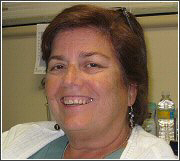
For More Information
For more information please contact Debbie Rankin, study coordinator at 561-736-5055 or via email at [email protected].
Age-Related Macular Degeneration Treatments
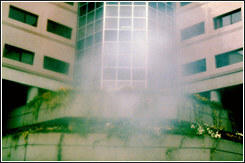
Age-Related Macular Degeneration is a chronic eye disease marked by deterioration of the macula (central part of the retina) which is responsible for central vision. The disease doesn’t cause total blindness, but it can greatly affect a person’s quality of life, because clear central vision is necessary for reading, driving, recognizing faces & doing detail work.
About 1.75 million U.S. residents currently have AMD with associated vision loss, with that number expected to grow to almost 3 million by 2020 according to the Archives of Ophthalmology. Those most at risk are individuals 50 years and older, people who suffer from hypertension, individuals who smoke and those with a family history of AMD.
There are two types of AMD, the wet and dry type. And while there is no cure for the condition, “there are treatments available today that may delay and prevent the progression of the disease, and in some instances improve visual acuity dramatically,” says Florida Eye Microsurgical Institute’s Macular Degeneration & Diabetic Retinopathy Specialist Randy Katz MD.
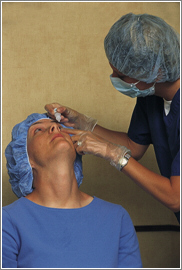
Treatments for AMD depend on whether the disease is in its early stage dry form or in the more advanced wet form that can lead to serious vision loss. According to the website allaboutvision.com, no FDA-approved treatments exist yet for dry AMD, although nutritional intervention may help slow the progression. Dr. Katz concurs, stating that “current findings show that high levels of antioxidants and lutein can play a key role in slowing the progression of advanced AMD.”
For wet AMD, treatments aimed at stopping abnormal blood vessel growth include FDA-approved drugs of Lucentis, Macugen and Visudyne (used in the procedure photodynamic therapy). Lucentis has been shown to improve vision in a significant number of people with macular degeneration. “We have experienced great success utilizing these treatments,” says Dr. Katz, “with many if not most patients maintaining excellent vision. There are numerous experimental treatments and studies that are ongoing at Florida Eye and throughout the country using more advanced medicines and therapies aimed at improving results and eliminating repeat injections.”
The standard of care for most types of bleeding in wet AMD is monthly intravitreal injections of Lucentis. For patients who have recently been diagnosed with AMD, Dr. Katz urges them to be wary of claims made online, in newspapers and in magazines announcing cures for macular degeneration. “Discuss what you’ve read with your ophthalmologist before undergoing any treatments,” says Dr. Katz. “Most of these treatments have not been proven safe or effective and may be very costly.”
Early detection and treatment is the best defense against losing your vision. If you are at risk for AMD, see your ophthalmologist for a complete eye exam once a year.
Using the Amsler Grid at Home to Test Your Vision
The 1st Line of Defense for Macular Degeneration Is Awareness
A simple test of your vision will alert you to any changes that may indicate a problem with macular degeneration or a worsening of your condition. This common test is known as the Amsler Grid.
The Amsler Grid looks like graph paper, with dark lines forming a square grid. Some versions have white lines on a dark background.
One of the first signs of macular degeneration can be wavy, broken or distorted lines OR a blurred or missing area of vision. The Amsler Grid can help you spot these early. Early detection of wet AMD is critical because laser treatment, when indicated, is most successful when performed before damage occurs. Since dry AMD can lead to development of wet AMD, most patients should use the Amsler Grid.
Check with your eye doctor to find out how often you should use this test.
How to Use the Amsler Grid
Wear your reading glasses as you normally use them and sit about 14 inches away from the screen.
Focus on the dark dot in the center of the grid. While looking at this dot, you still should be aware of the lines of the grid. If you notice any blurred, wavy or missing lines, contact your ophthalmologist as soon as possible.
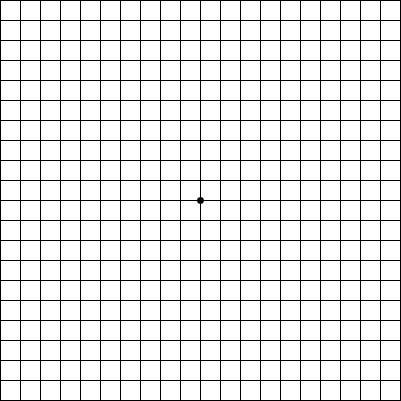
If you are in “the macular generation,” you should check yourself on the Amsler Grid. But remember that it is a “gross” test and may not catch early vision loss. You should see your eye doctor every year or two for a dilated eye examination.
The “Face” Test
Another way to easily test your vision is just waiting for you in your bathroom mirror. The key to catching vision problems is to look with one eye at a time, because when both eyes work together, they can hide a vision problem.
Every morning, simply look at your face in the mirror. Cover your left eye with your hand and focus on your face. Then switch, covering your right eye with your hand so you’re looking at your face with the left eye. If you notice any central blurring or missing parts, contact your doctor for an eye examination.
[Info courtesy of AMD.org, Discovery, The Discovery Eye Foundation]
All About Lutein
Interesting Info from Wikipedia to Chew On

Lutein was found to be concentrated in the macula, a small area of the retina responsible for central vision. The hypothesis for the natural concentration is that lutein helps keep the eyes safe from oxidative stress and the high-energy photons of blue light. Various research studies have shown that a direct relationship exists between lutein intake and pigmentation in the eye.
Macular Degeneration
Several studies show that an increase in macula pigmentation decreases the risk for eye diseases such as Age-Related Macular Degeneration (AMD). The only randomized clinical trial to demonstrate a benefit for lutein in macular degeneration was a small study in which the authors concluded that visual function is improved with lutein alone or lutein together with other nutrients, and also that more study was needed.
There is epidemiological evidence of a relationship between low plasma concentrations of lutein and zeaxanthin, and an increased risk of developing AMD. Some studies support the view that supplemental lutein and/or zeaxanthin help protect against AMD.
In 2007, in a 6-year study, John Paul SanGiovanni of the National Eye Institute, Maryland found that lutein and zeaxanthin (nutrients in eggs, spinach and other green vegetables) protect against blindness (macular degeneration), affecting 1.2 million Americans, mostly after age 65. Lutein and zeaxanthin reduce the risk of AMD.
Cataracts
There is also epidemiological evidence that increasing lutein and zeaxanthin intake lowers the risk of cataract development. Consumption of more than 2.4 mg of lutein/zeaxanthin daily from foods and supplements was significantly correlated with reduced incidence of nuclear lens opacities, as revealed from data collected during a 13-15 year period in the Nutrition and Vision Project (NVP).
See the Wikipedia entry for lutein »
Back to School — Have You Had Your Child’s Eyes Examined Yet?
A child’s ability to see the blackboard and the words on a page is clearly critical to their learning experience. Often children do not realize they have problems with their vision because they think how they see is how everyone else sees. They learn to compensate with their vision problems without fixing them, which can lead to more problems in school and later in life.
Unfortunately, some students are misdiagnosed as having a learning disability or behavioral problems when they may simply have vision impairment. This confusion can be eliminated taking a child for a certified vision screening or an eye exam.
“Vision problems affect one in four school-aged children,” says Florida Eye’s Lee Friedman, MD, the Institute’s Pediatric & Adult Strabismus Specialist. “A child should not have to struggle in school — or out of school for that matter — because of an undetected vision problem.”
Friedman says that eye problems can range from common refractive errors such as nearsightedness and farsightedness, to serious eye conditions such as Amblyopia, or “lazy eye,” the most common cause of visual impairment in children. “As the brain develops and receives diminished images from the affected eye, it begins to suppress those images and favor the unaffected eye. If this condition persists, the weaker eye may become useless. Amblyopia becomes more difficult to treat effectively as the child becomes older, so the earlier this condition is diagnosed the better it is for the child.”
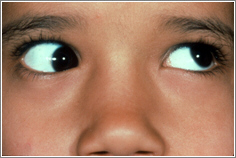
Strabismus is another common eye condition found in approximately one out of 50 children. Also known as “crossed eyes,” strabismus is a condition where eyes are misaligned, or do not line up with each other. This problem is caused when the muscles do not work together. Strabismus may eventually lead to Amblyopia.
For more information about these conditions see Strabismus (Adult and Pediatric) in our Specialties section. Parents can also check into Prevent Blindness America’s “Star Pupils,” a free program specifically designed to educate parents on what they can do to ensure healthy eyesight for their kids. Parents can visit Starpupils.org and receive free information on everything from common eye conditions in children to tips on how to protect eyes from injury while playing sports.
Florida Eye’s Dr. Jennifer Garib Available for Lectures
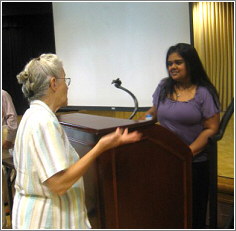
Dr. Jennifer Garib recently treated the residents of Abbey Delray South, a life care senior living facility in Delray Beach, to an informative lecture followed by a question and answer session. “Everything You Always Wanted to Know About Eye Care But Were Afraid to Ask” was the topic. And Dr. Garib, whose lecture was very well attended, received excellent reviews.
“Dr. Garib was so patient and answered many questions for us,” said one long-time resident of the facility. “And all of us were so appreciative of the Amsler Grids and goodies Florida Eye provided for us. We look forward to having her talk with us again in the near future.”
Dr. Garib has been a part of the Florida Eye Microsurgical Institute family for more than five years. Dr. Garib received her doctorate in optometry in 2002 at Nova Southeastern College of Optometry in Ft. Lauderdale.
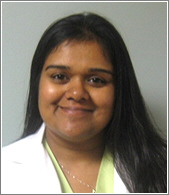
In her role as optometrist at Florida Eye, Dr. Garib is responsible for overseeing technicians and helping to manage difficult cases and for imparting information to patients. She works closely with Barry Schechter M.D., F.A.A.O., Florida Eye’s Refractive Cataract Surgery, Glaucoma, Cornea & External Disease Specialist.
If your club or living facility wishes to have Dr. Garib lecture, please contact [email protected] or call (561) 736-5050 for more information.
Lions Club Eyeglasses Collection Drive in Full Swing

Last September, in an effort to help the Lions Club’s collection efforts, Florida Eye began collecting used eyeglasses and sunglasses at three of its four locations. We are very happy to report that during this first year we have collected well over 2,500 pairs of glasses, and we hope to collect even more during this next year.
Thanks to our wonderful patients, neighbors, colleagues, family members and friends, millions of men, women and children are fitted each and every year with recycled glasses, allowing some the chance to see clearly for the first time in their lives.
Eyeglasses may be dropped off at any time during normal business hours 8:30 a.m. to 5:00 p.m. at any of our participating locations (click below for directions).
• Boca Raton
• Boynton Beach
• Wellington
This is an ongoing collection drive and we urge everyone with old, unused glasses to drop them off at their convenience. For more information about the Lions Club and its many volunteer programs, visit the Lions Club website.
Eye Care Questions
Dear Dr. Katz:
Can retinal holes get worse or develop further? I have one in my right eye, but my ophthalmologist can’t give me a 100% guarantee that having surgery on it will close the hole. I’m not sure if surgery is worth it unless I know it will be successful.
Answer

If left untreated then yes, some retinal holes or retinal tears can get worse and new retinal holes or tears can develop, but most retinal holes or tears don’t require treatment. If you are experiencing symptoms like flashing lights or blurry vision, then it’s most likely you are dealing with a retinal detachment, which does require treatment. If you have not been having any symptoms associated with retinal holes than your ophthalmologist can keep an “eye” on your condition. As for a 100% guarantee, there is no such thing with surgery, however, the treatment of retinal holes is usually successful.
Dear Dr. Friedman:
My son just turned ten and we only now found out that he has become color blind. We’ve noticed nothing else regarding changes in his vision. My husband and I both always thought a person is born color blind, but I know my son was not born with this condition. What happened and what should we be doing now?
Answer

Most “color blind” people have what we call a congenital dyschromatopsia — they are missing one of the three cone photoreceptors. The vision is completely normal, there is no nystagmos and it is not progressive. The color deficiency is usually in the red-green spectrum and affects mostly the hues of these colors. Children can often discriminate pure red from pure green. Colors just appear washed out. This trait is usually x-linked, meaning it is seen in males of every other generation through the mother’s line.
So if your child’s visual acuity is intact and he is otherwise healthy, it is likely that he has a congenital dyschromatopsis that was subtle and just noticed.
Acquired color defects are usually due to eye disease — optic nerve or macula — and the vision is usually effected. Optic neuritis, optic atrophy, chronic dislecema, diabetes, macular edema, progressive macular dystrophy or degeneration can all affect color perception, but can also impair vision.
Dear Dr. Schechter:
I recently read about a new technology called Femtosecond Laser that is in trials now for cataract surgery. What is this procedure and how far off is it before it’s commonplace in operating rooms?
Answer

Femtosecond Laser is the next generation in cataract care, and preliminary reports have proven promising. With this laser-based cataract surgery, the laser incisions are more exacting and very hard stubborn lenses may be softened before phacoemulsification — or phaco, which is currently the most popular surgical procedure practiced today. This may make difficult cases easier to perform. However, this technology is in its infancy and needs to be refined before it reaches the marketplace.
Dear Dr. Gorscak:
My 52-year-old wife had a corneal transplant three years ago. Is it safe for her to get that eye dilated?
Answer

It is not only fine for your wife to have her eye dilated, it is recommended. Eyes should be dilated on a regular basis once a person reaches 40 years of age. This should be done more frequently as we age because eyes tend to develop more problems as get older, and routinely after certain forms of eye surgery.
Dear Dr. Rubin:
I have dark hollows under my eyes but I am not ready to have lower eyelid surgery or any type of cosmetic surgery right now. A friend told me there are injectables that can achieve the same effect as surgery, even though the results won’t last more than a year. Can you tell me what my options are?
Answer

A careful examination can help determine the cause of the dark hollows under the eyes. There are numerous reasons as to why you may have the dark hollows. Possibilities include a shadowing effect from bulging fat around the eye into the lids, depression of tissue in the inner corner of the eyelids overlying the lower rim of the eye socket (tear trough), sagging of the upper cheek fat, racial or ethnic pigmentation, old deposits of blood from prior bruising, or increased melanin (pigmentation) from chronic inflammation. It is critical to identify the precise cause of the dark appearance of the lids. In select cases, the injection of filler agents (cross-linked hyaluronic acid products such as Juvederm™ or Restylane™, or calcium hydroxylapatite particles — Radiesse™) may help restore a more youthful and less fatigued appearance to the eyes and face. Results vary from person to person, but it is reasonable to expect such injections to last anywhere from nine months to a year. A comprehensive evaluation by an eyelid expert can help distinguish among these possibilities and lead to a customized solution.
Cosmetic Specials — DrBarrySchechter.com
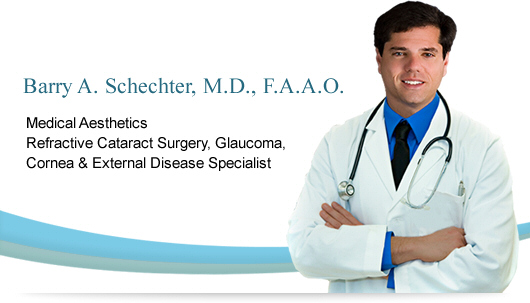
For more information:
Visit DrBarrySchechter.com. Contact us at [email protected] or call 561-736-5067 to make an appointment.
Ask About Our Botox Rewards Program
Be a Voice for Vision
Support vision and eye health across America! Congress is working on appropriations for the next fiscal year. Now is the time for the Eye Care Action Network (Eye CAN) to tell Congress to support vision and eye health programs that preserve sight and prevent blindness!
Prevent Blindness America is working diligently to secure fiscal year 2012 funding for sight-saving programs at the Centers for Disease Control and Prevention’s, the Maternal and Child Health Bureau and the National Eye Institute. An estimated 80 million Americans have a potentially blinding eye disease, 3 million have low vision, 1.1 million are legally blind, and 200,000 are more severely visually impaired. While vision impairment and blindness are among the most feared disabilities, effective public health initiatives can dramatically decrease these numbers.
Be a Voice for Vision —
Final Tidbits
Dr. Schechter Interview

Dr. Schechter was recently interviewed for a health segment with Channel 25’s Tiffany Kenney. Stay tuned for the details. The segment will air this month during the 5:00 p.m. broadcast.
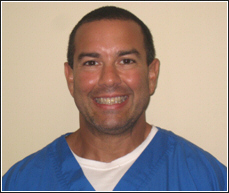
Juan Estela Lecture
Florida Eye’s Juan Estela, COA will be lecturing at the Joint Commission on Allied Health Personnel in Ophthalmology this October in Orlando. Juan’s lecture, Diagnostic B-Scan Ophthalmic Ultrasound Workshop, will be attended by at least 450 attendees.
Way to go Juan!
Our Florida Eye Family Continues to Grow!
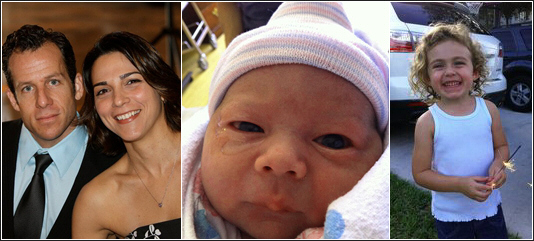
Florida Eye’s Richie and Alisha Zuccaro, along with big sister Antonia,
welcomed Richard Nicolas Zuccaro the third, born September 14th, 2011. Dad Richie is the Institute’s Director of Technology, and Alisha is an ophthalmic
technician.
Baby Richie was born 8 lbs, 1 ounce and 20 inches tall.
